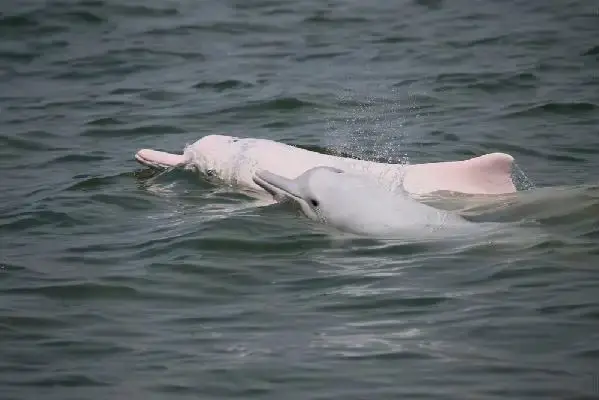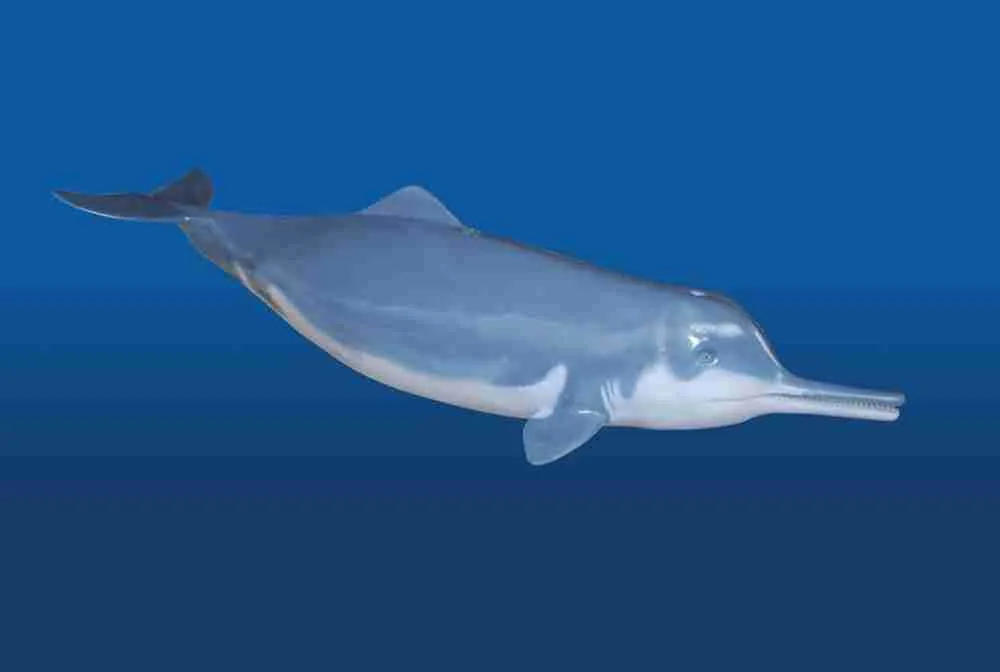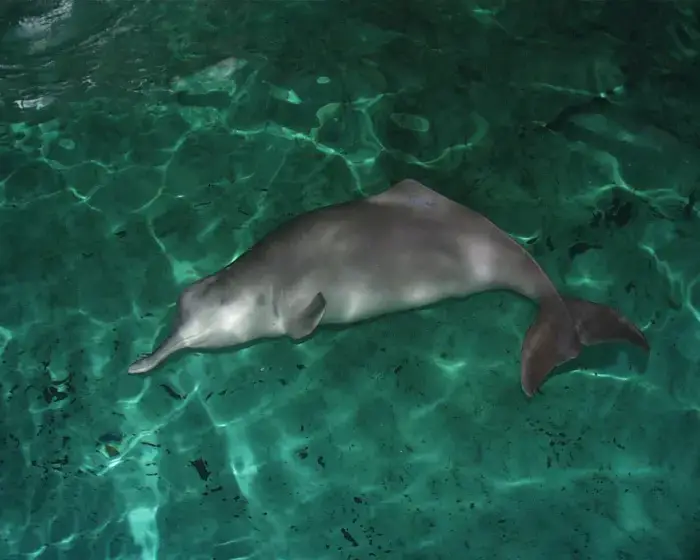The Baiji is a probably extinct species of freshwater dolphin that thrived in the Yangtze River ecosystem in China. The Baiji white dolphin is speculated to be the 1st dolphin species to disappear due to human encroachment on its natural habitat. The Baiji dolphin population in the Yangtze River declined drastically in less than five decades during China’s industrialization.
Baiji white dolphin information

The aquatic mammal is the only member of the Lipotidae mammal family; due to the dolphin’s one-of-a-kind features which are not present in other dolphin or whale species. Part of the mammal’s stomach anatomy and skeleton are unique. For instance, the dolphin’s stomach has three compartments, a feature that is not shared with other dolphin species.
The Yangtze River was the aquatic mammal’s home for approximately 20 million years. Sadly, it took around fifty years for humans to wipe the gentle creatures out of existence. During industrialization, China heavily used the Yangtze River for hydroelectricity, transportation, and fishing. These human activities resulted in pollution and depletion of the aquatic mammal’s food source.
The Baiji is listed under the group of animals considered “critically endangered: possibly extinct” by the International Union for Conservation of Nature (IUCN). For the last 20 years, no report of any sighting of this endangered species has been made. Also, surveys on the Yangtze River have failed to prove that the dolphin survives. The dolphin was added to the endangered/functionally extinct list in 2007 after a 6-week research expedition failed to find even a single one. However, there have been Baiji dolphin sightings in the river between 2007 and 2018. The last sighting was disputed.
What does the baiji dolphin look like?

The baiji dolphin has a stocky body with broad, rounded flippers. Its head is small but has a prominent melon. The dolphin has a long, narrow beak lightly upturned at the tip. The beak features approximately 31 to 36 conical teeth on its jaws. Its eyes are smaller and higher on the aquatic mammal’s head than in oceanic dolphins.
The dolphin is grey-whitish on the belly (ventral) side and pale-bluish on the back (dorsal) side. Its dorsal fin looks like a light-colored flag when the dolphin is near the surface of the Yangtze River’s mucky waters and is small and triangular. This is why the aquatic mammal was nicknamed the white-flag dolphin.
Calves measure approximately 0.8-0.9 meters at birth. Mature males are about 2.3 meters long and are approximately 167 kilograms in weight. On the other hand, the females are around 2.5 meters long and are approximately 167 kilograms.
What does the Baiji symbolize in china?
In the Yangtze region in China, Baiji symbolizes peace and prosperity. As mentioned earlier, the Baiji, the Goddess of the Yangtze, and boatmen and fishermen regarded the dolphin as the Goddess of protection.
Where do baiji dolphins live
The mighty Yangtze River has been the Baiji dolphin’s home for more than 20 million years. However, their numbers dropped drastically in a few decades during China’s industrialization. As the country industrialized, it heavily used the river for hydroelectricity, fishing, and transportation. Additionally, untreated industrial waste was dumped into the river contaminating the water.
Overfishing depleted the Baiji dolphin’s food. Some Baijis were also hurt by the fishing hooks that the fishermen cast into the river to catch fish. Pollution made the water toxic and uninhabitable for the dolphins. These factors combined led to the disappearance of the beautiful dolphins from the river in less than five decades.
What baiji dolphins eat
Baiji dolphins are carnivores, and their diet consists of a wide variety of small fish. They have a long beak which they use to explore the muddy bottoms and riverbeds for food. When baiji looks for food at the bottom of the water body, it only submerges for up to 20 seconds and goes back to the surface.
Baiji dolphins have very poor eyesight; thus, they utilize their well-developed echolocation sense to find food. Since they do not like submerging in the water for long, they mostly look for food near sand banks where the water is shallow.
How many baiji dolphins are left?

Baiji dolphin graced the Yangtze River for approximately 20 million years. Baiji’s had a healthy population of over 6000 animals, and the number declined drastically in the late 20th century. The total population was approximated at less than 100 animals in the 20th century, with surveys in the 1990s having an estimate of only 13 animals.
An extensive survey in 2006 that covered the main Yangtze channel did not find any evidence that baiji survives. Further surveys conducted in almost 30 fishing communities in the Yangtze in 2008 also found no evidence of any surviving baiji. Thus, baiji dolphins are extinct since there have been no verified sightings ever since, and the only conclusion is that they are gone forever.
Baiji dolphin extinction became the first documented worldwide disappearance of a megafaunal vertebrate in over 50 years, and also the extinction of a whole mammal species, the Lipotidae family.
Why are baiji white dolphin extinct/how did baiji dolphin become extinct
Baiji dolphins became extinct because of harmful fishing practices. Their extinction was solely man-made, and the disappearance of these unique river dolphins could have been avoided with appropriate laws.
Although China put in place protective legislation in the 1970s banning dangerous fishing practices and established reserves for baiji dolphins in the Yangtze river, the laws proved challenging to enforce and did not provide sufficient protection for this species.
During the industrialization era, baiji dolphins were hunted for leather, oil, and meat, which resulted in their decline. Pollution, wide-scale habitat degradation, and unsustainable bycatch practices in local fisheries also contributed to Baiji’s extinction.
Conclusion
River dolphins are rapidly becoming endangered. Things such as pollution, harmful fishing practices, and shipping have taken a toll on this unique species. We should not wait until another species goes extinct as baiji dolphins did, and we should take action to save other endangered animals.
